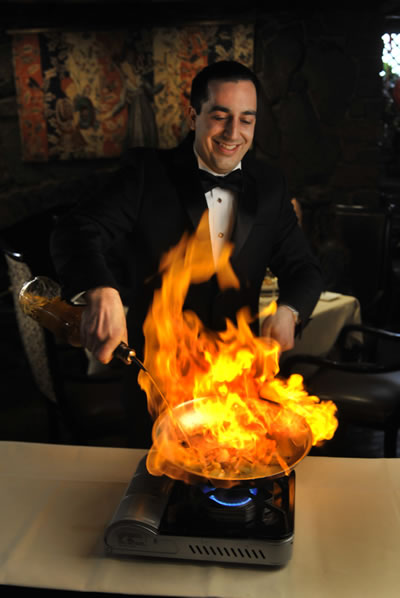The Magic of the Flambé
Capriccio has long been famous for are our tableside preparations. While the delicate tableside deboning of our signature Dover Sole and carvings of Beef Wellington and Racks of Lamb entrance patrons, it is the magic of our classic tableside flambés, such as Steak Diane, Crepes Suzette, and Scampi dancing in its pan, that take center stage.
 The word “flambé” is derived from the French word for flamed. In this method of cooking, alcohol is added to the pan in which the food sautés in a sauce. This catches fire in a dramatic presentation. Because the fire is short lived, the flambé does not burn the food, as is imparts a smoky flavor to the food and a savory or sweet flavor to its sauce.
The word “flambé” is derived from the French word for flamed. In this method of cooking, alcohol is added to the pan in which the food sautés in a sauce. This catches fire in a dramatic presentation. Because the fire is short lived, the flambé does not burn the food, as is imparts a smoky flavor to the food and a savory or sweet flavor to its sauce.
While the art of the flambé is supposed to have originated in the 14th century around the Moors, it gained prominence only by the late 19th century. Another variation to its origins is believed to have been more sudden. It is told that Henri Carpentier, a waiter, accidentally set fire to a pan of crepes being prepared for Edward VII, the future king of United Kingdom. Though this theory has not been proved, it seems the safest assumption of the start of flambé in recent times.
Flambé cooking is art in the hands of a skilled dining room captain. It requires experience, a deft hand and a special kind of skillet or flambé pan with a long handle. The food to be flambéed should be warm, as cold food will not allow the alcohol, typically a brandy, to catch fire. It’s also necessary to ensure that the poured liquor is warm. The process of flambéing lasts less than a minute. But, done correctly, the drama and the delicious result will linger on the palate and the memory long after.

